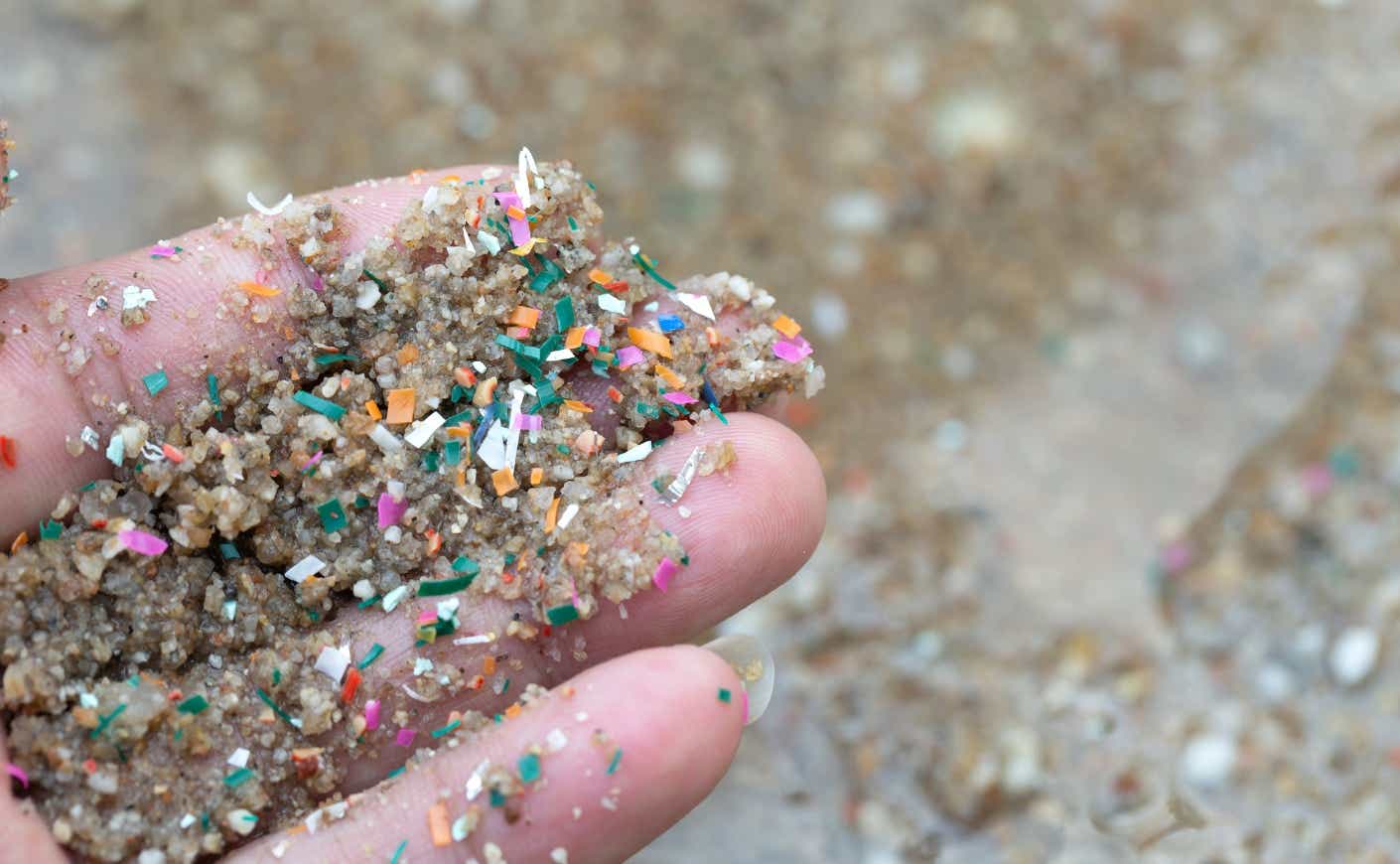
Figure 1: Microplastics found in sand.
Plastics are everywhere in the world and are used in almost all aspects of life. They are polymers, meaning that its chemical compound is made up of many repeating units, also called a chain. Some examples of common plastics are polystyrene, which is used to produce packing materials and has a chemical formula of (C8H8)n, and polyvinyl chloride (PVC), which has a chemical formula of (C2H3Cl)n and it used in a wide range of materials such as shower curtains to indoor plumbing. Although plastics have arguably improved some parts of life (convenience-wise), there is no denying the negative impacts that plastics have on the environment. This is mainly due to the fact that most plastics have not been recycled and are filling up landfills and the oceans.

Figure 2: The chemical formula of polystyrene, a plastic with many uses
Because of this, there have been growing concerns of how plastics may affect human health. Around 20 years ago, a marine biologist named Richard Thompson first discovered small plastic particles, which he called "microplastics". Since this discovery, scientists all over the world have been looking for microplastics everywhere, including in living creatures. An article posted by the New York Times covered different discoveries by scientists and where they have found microplastics in the human body. For example, a group of Italian researchers first detected microplastics in the human placenta. Additionally, a research group in the Netherlands tested microplastics on immune cells and found that the cells that came in contact with various plastics died three times as quickly compared to the cells that did not. They also discovered that polystyrene was especially toxic to the immune cells.
The article's main focus is on research from a group in Turkey, who claims they have found microplastics inside of the human brain. Some of the particles they identified were "deep inside the tissue of cancerous brain tumors". A film was created based off of this research to highlight the importance of microplastic pollution and spread awareness. The research in the documentary was done by Dr Gündoğu at Cukurova University, who discovered six different kinds of plastic particles in 15 different samples, from patients with tumors. He says that he is not exactly sure how the plastics may have gotten into the brain tissue, but because of previous data of microplastics being in blood, he concludes that they may have traveled via the blood vessels feeding the tumors. There has to be more research done to see specific effects that the plastics have on the brain, but it is hypothesized that chemicals coming from the plastics can seep into the cells.
The article concludes talking about the co-director of the movie, saying that she hopes her film can inspire people into changing the way we consume plastics, especially single-use ones.
References:
1. https://www.nytimes.com/2024/03/09/health/microplastics-sxsw-health-plastic-people.html
2. https://www.sciencehistory.org/education/classroom-activities/role-playing-games/case-of-plastics/science-of-plastics/
3. https://katiecouric.com/health/what-are-microplastics-dangers/

I would abbreviate the headline to "Dangerous Microplastics Found in the Brain." Punchier and more active. Your graphics are well-chosen and eye-catching. I would start with a lede paragraph mentioning the discovery of microplastics in the brain. Then go on to your more general discussion of plastic pollution, and finally come back to the details of the work of the Turkish group. Journalists do this all the time to get people to read the whole article. Your discussion of the chemistry is good. I think it's a good idea to give people some real chemical terminology and formulae. You might work on using more active language. I might suggest for the last sentence in the first paragraph, "This results from the failure to recycle most plastics which instead go to landfills and the ocean." Overall an interesting post on a timely topic.
ReplyDelete